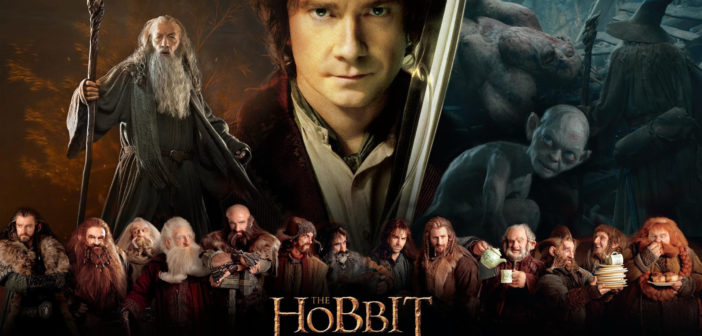After the extraordinary commercial success of the “Lord of the Rings” trilogy, it was unsurprising that the movie industry wanted to further capitalize on the fantasy works of renowned author J.R.R. Tolkien. The three-movie adaption of Tolkien’s famous trilogy of books generated almost $3 billion in revenue and earned eleven Oscars for “The Return of the King,” the final movie in the series. “The Hobbit: An Unexpected Journey” is the cinematic successor of the “Rings” franchise, although the events in this new movie take place before the events in the “Rings” trilogy.
The film and the book from which it was adapted tell the tale of Bilbo Baggins, a hobbit who is recruited to take on a magnificent quest. Tolkien’s 1937 novel “The Hobbit” was written prior to the three-book “Lord of the Rings” trilogy and differs quite a bit in tone. Where the “Rings” series involved a quest to stop world-ending events and included many dark themes, “The Hobbit” was written by Tolkien as a short children’s tale.
“The Hobbit: An Unexpected Journey” opens with a prologue that explains how the inhabitants of the dwarf kingdom of Erebor were driven from their homeland by the dragon Smaug. The dwarfs had attracted the dragon’s attention by accumulating too much gold, which dragons covet with dark and fierce desire.
An older Bilbo Baggins, played by Ian Holm, the actor who originated the role in the “Rings” trilogy, remembers a time in his youth when he received a visit from the wizard Gandalf (Ian McKellen). Gandalf wanted Bilbo to help a group of dwarfs reclaim their homeland from Smaug. As the movie transitions into the events of the past, the role of young Bilbo is played by Martin Freeman.
Bilbo the hobbit is not enthusiastic about undertaking this journey. Not wanting to give up the comforts of home, he needs much convincing before he gets on the road with Gandalf and the thirteen dwarfs, including their leader, Thorin Oakenshield (Richard Armitage). As the group pursues its quest, it is hunted by monstrous orcs and bloodthirsty goblins, captured by trolls, and spooked by ghosts.
“The Hobbit: An Unexpected Journey” is a fantasy masterpiece. This film is the first in a planned trilogy, so the part of the book depicted in the movie does not add much background to the “Rings” trilogy beyond the introduction of Gollum (Andy Serkis). Instead, the movie further fleshes out Middle-earth and its inhabitants.
This addition to the franchise presents new protagonists and few familiar faces. This new film is all about Bilbo Baggins, but it does cater to established fans by giving a few of the old characters, such as Galadriel (Cate Blanchett) and Elrond (Hugo Weaving), cameo appearances. However, fans of Strider, the king-in-waiting, may be disappointed to discover no prologue to his story is presented.
The film makes the most of its straightforward mythical themes, including the grand heroic quest. Each location along the journey is realistic and distinct, helped by the gorgeous photography of Andrew Lesnie, the intricate production design of Dan Hennah, and the soaring musical score created by Howard Shore. The heroes are a combination of superiors like Gandalf and ordinary folk like Bilbo. The audience can relate to Bilbo’s situation as he deals with the gruff Gandalf and the antagonistic Thorin, while he ultimately tries to accomplish a great feat and return home in one piece.
Nearly three hours long, the film immerses the audience in Middle-earth. For newcomers to Tolkien’s fantasy world, “The Hobbit: An Unexpected Journey” is likely not the best place to jump in. Some of the events that happen only acquire meaning if the viewer knows how they relate to the “Rings” trilogy. Despite that caveat, the film is engrossing, and if a viewer must watch it again after viewing the “Rings” trilogy, that is unlikely to be a hardship.

